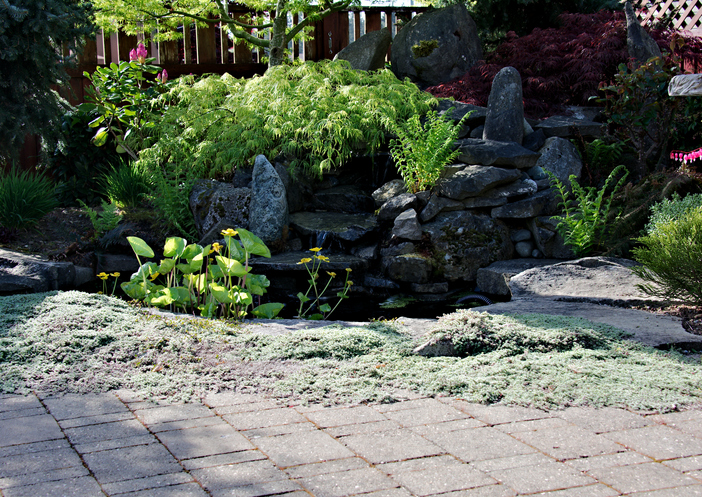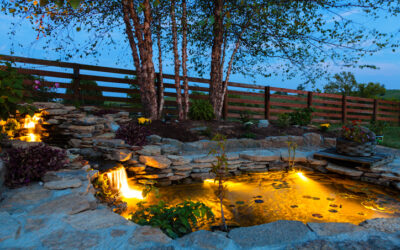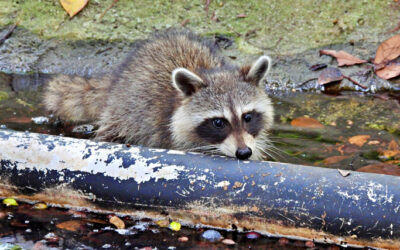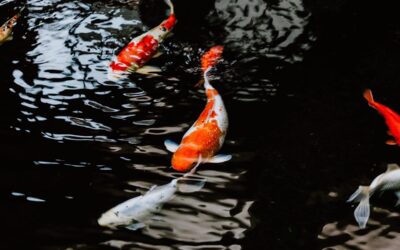Pond placement in small-scale landscape design is essential for creating a cohesive and aesthetically pleasing outdoor space. The right location can enhance your yard’s visual appeal while ensuring that your pond receives the proper sunlight, has the ideal surroundings, and remains easily accessible for maintenance and enjoyment.
In this article, we will guide you through the key factors to consider when choosing the perfect spot for your small pond, helping you create a harmonious and functional waterscape in your yard. This article aims to provide a comprehensive guide to placing and creating small ponds that cater to your preferences and elevate your outdoor living experience.

Factors to Consider Before Installing Your Small Pond
1. Proximity to the house:
A smaller pond can be placed closer to the house without overwhelming the space, allowing for easy access and the ability to enjoy the pond from inside. Consider the view from your home’s windows and outdoor living areas, as well as how the pond will fit into your overall landscape design. Keep in mind that being closer to the house may require more frequent maintenance due to debris from gutters or roof runoff.
2. Fences and property lines:
Ensure your pond is placed within your property boundaries and respects any local regulations regarding setbacks from fences or property lines. A smaller pond may have more flexibility in placement, as it can fit within tighter spaces between fences and property lines. Consider how the pond will affect privacy and whether a fence or other screening will be necessary to create a comfortable outdoor space.

3. Neighbors and privacy:
When placing your pond, consider the potential impact on your neighbors, such as noise from water features, increased foot traffic, or reflected sunlight. Smaller ponds are generally less obtrusive and may cause fewer concerns from neighbors. Strategically position your pond to maintain privacy for both you and your neighbors, using plants or other screening elements if needed to create a sense of seclusion.
4. Natural areas and landscaping:
Smaller ponds can be more easily incorporated into existing landscaping or natural areas without significantly disrupting the ecosystem or requiring extensive alterations. Consider the balance between blending your pond with the natural surroundings and creating a unique, aesthetic feature within your yard. Assess the proximity of trees and vegetation to avoid potential issues with root systems, leaf debris, and shading while still maintaining a sense of harmony with the natural landscape.
5. Proximity to trees and vegetation
Pros and cons of situating a pond near trees
Situating a pond near trees can have both advantages and disadvantages. On the positive side, trees can provide shade, create a natural backdrop, and add visual interest to the pond area. They can also contribute to a sense of privacy and help support local wildlife. However, there are drawbacks to placing a pond too close to trees.
Tree roots can potentially damage pond liners or disrupt the pond’s structure over time. Additionally, fallen leaves and debris can increase maintenance requirements and negatively impact water quality.

The influence of vegetation on pond maintenance and water quality
Vegetation can greatly influence pond maintenance and water quality. While aquatic plants can help balance the ecosystem by providing oxygen, absorbing nutrients, and offering shelter for fish and other pond inhabitants, excessive or invasive plants may require regular pruning or removal.
Nearby trees and shrubs can drop leaves, seeds, and other debris into the pond, potentially clogging filters, pumps, or other equipment and affecting water clarity. Choosing the right mix of vegetation and carefully managing the proximity of trees and shrubs will help ensure a healthy, low-maintenance pond.
6. Accessibility and safety
Ensuring ease of access for maintenance and enjoyment
You need to consider accessibility when placing your pond. The pond should be easily reachable for routine maintenance tasks such as cleaning, water testing, and equipment checks. Additionally, it should be easily visible and accessible for daily enjoyment and relaxation. Consider creating paths, seating areas, or viewing points near the pond to maximize its functionality and enhance your overall outdoor living experience.
What should I consider when choosing the size of my pond?
When planning a pond, carefully balance the scale of the project with the size of your yard. A pond that is disproportionately large may overwhelm your outdoor space, detract from other landscaping elements, and potentially create maintenance and safety challenges. Ideally, a pond should occupy no more than 20-30% of your available yard space, leaving ample room for other landscaping features, recreational areas, and greenery.
For those with small or medium-sized yards, a modest-sized pond is recommended, as it can provide tranquility and aesthetic appeal without dominating the space. In larger yards, there may be more flexibility in pond size, but keep in mind the overall design and the practical implications of a larger water feature, such as maintenance requirements and safety precautions. By aiming for a harmonious outdoor space that serves your needs and preferences, you’ll create a proportional and visually appealing waterscape.
Finding the Perfect Pond Placement in Your Yard
Pond placement is a critical aspect of small-scale landscape design, as the ideal location can enhance your yard’s visual appeal, accessibility, and overall harmony. By carefully considering factors such as proximity to the house, fences, neighbors, natural areas, trees, vegetation, and accessibility, you can create a functional and aesthetically pleasing pond that caters to your preferences and elevates your outdoor living experience.
In this comprehensive guide, we’ve explored the essential factors to consider when choosing the perfect spot for your small pond. By balancing the scale of your project with the size of your yard, prioritizing accessibility and safety, and thoughtfully incorporating trees and vegetation, you can create a harmonious and visually appealing waterscape that seamlessly integrates with your landscape design. Ultimately, finding the ideal pond placement will help you create a tranquil, enjoyable outdoor space that you and your family can cherish for years to come.

About the Author
With decades of experience, James shares his extensive knowledge in aquatics through this website, covering a broad series of topics related to the pond and aquarium hobby. Aiming to guide both beginners and experienced hobbyists alike, his goal is to help educate aquatic enthusiasts for the long-term betterment of the hobby as well as the environment. Learn More >>
Pond Safety: Making Your Backyard Pond Safe for Kids and Pets
Common Considerations for Keeping Your Pond a Secure and Enjoyable Space Note: This list is not exhaustive but should give you some good ideas of how to make your pond a safer and more enjoyable experience! Are backyard ponds safe for kids? Backyard ponds can be a...
10 Ways to Deter Raccoons From Your Pond
Raccoons, with their curious nature and cute, masked faces, may seem like endearing visitors to your backyard. However, these nocturnal creatures can pose a significant threat to the safety and well-being of your pond's inhabitants, such as fish and other aquatic...
How to deter birds from eating your fish
Koi ponds have become increasingly popular in recent years, and for good reason. Not only are they beautiful and peaceful, but they also provide a chance to connect with nature and be a source of personal accomplishment. In this list, we will explore three top reasons...



